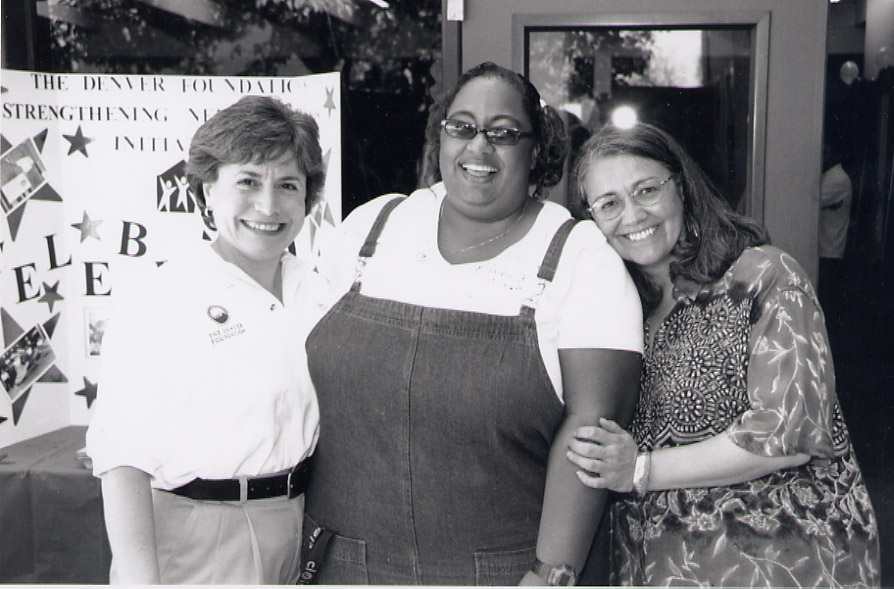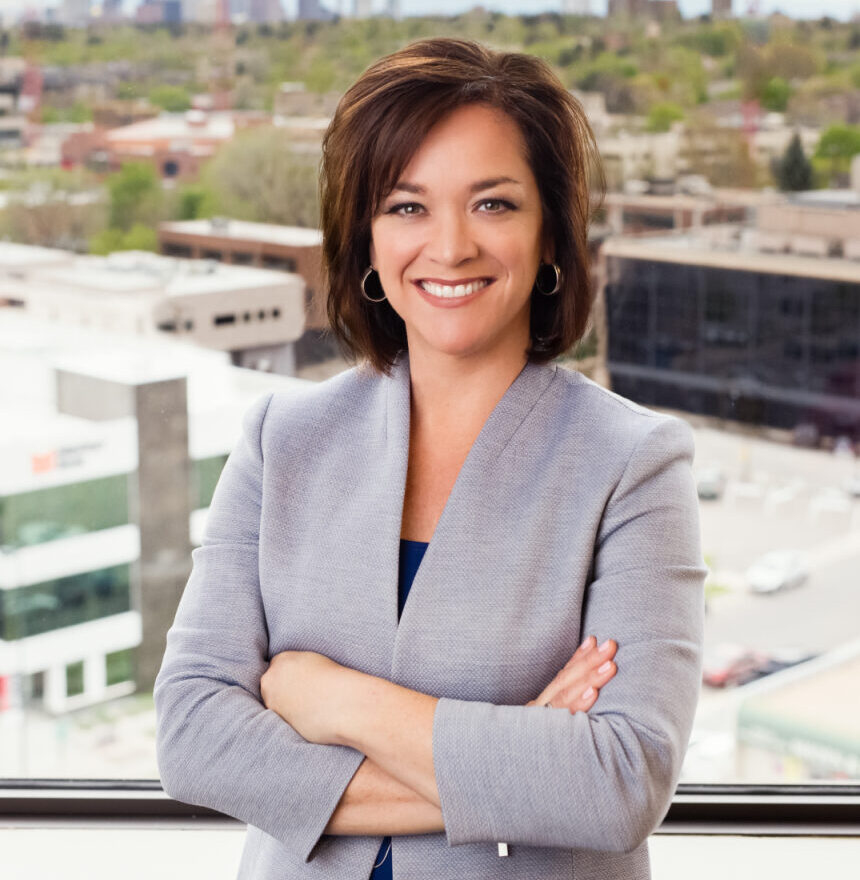Pictured above: LaDawn Sullivan is the executive director of the Black Resilience in Colorado (BRIC) Fund.
This is an excerpt from Chapter 4 of our book, “A Century of Impact: The Denver Foundation’s First 100 Years.” It offers a glimpse into the history of the foundation, highlighting our ongoing journey to advance diversity, equity, and inclusion in our work.
Organizations can’t remain static when the world around them is changing. The Denver Foundation strove to embody this principle from the beginning. As an organization, the foundation recognizes the need to reflect on its practices, create space for challenging conversations, and support the inclusion of ideas and people.
Key turning points in the foundation’s past—such as the creation of the Strengthening Neighborhoods program—opened doors for exciting community-led solutions and collaborations, innovative grants, and diverse leadership. These challenges and the rewards of facing them head-on have made the organization what it is today.
Recollections From an “Aha Moment”

Authentic connection can be hard to come by, and finding an organization that prioritizes authenticity is even more so. It requires trust between staff and community partners. This is something many of us crave in today’s world—for people to speak their minds and learn from each other.
LaDawn Sullivan, a staff member of The Denver Foundation for more than 25 years, offered community connections and the vision to help move the foundation authentically toward building rapport through the lens of diversity, equity, and inclusion (DEI) work in Denver and beyond.
Sullivan remembers a time when the foundation was standing at the edge of the springboard, ready to launch the organization’s work to the next level—and she’s so glad the foundation took the leap.
In the mid-2010s, casual conversations among coworkers became an organization-wide discussion about the merits of diverse leadership, the state of DEI at the foundation itself, and DEI in Metro Denver nonprofits.
When looking at what DEI meant for nonprofits, Sullivan recalls voicing in a board meeting that the foundation “couldn’t ask people to answer questions that we can’t answer ourselves.” While the foundation had long supported diversity inside and outside the organization, no formal policy was in place to sustain it. The organization’s leadership embraced that message and worked with staff to have open conversations and to not only build on existing diversity initiatives but also develop and implement sustainable internal practices and policies.
Denver Nonprofits and Embracing Uncomfortable Conversations
As they worked to create sustainable policies, foundation staff sought out frameworks that other nonprofits in the philanthropic sector were using to support diversity and inclusion policies within their own organizations.
They soon discovered that other organizations also lacked formal frameworks and policies to ensure that their diversity and inclusion practices were sustainable, but many wanted them. What were the barriers? A dearth of challenging and vulnerable conversations about race and other identities conversations that needed to happen in order to address barriers and create policy—was holding many organizations back.
Fortunately, the foundation thrives in such spaces and excels at bringing voices to the table for those hard conversations, amplifying diverse voices, and co-creating shared decision-making practices.
By 2020, the response to George Floyd’s murder at the hands of police and the rise of the Black Lives Matter movement brought DEI work into focus for mainstream reckoning on a national level. In Denver, The Denver Foundation’s openness and capacity for facilitating these conversations were taking root to become emblematic of a new path forward.
Introspection and Innovation

From the mid-1990s on, The Denver Foundation had been investing in training diverse leaders and inviting them to the table at many levels. In 2017, just after Christine Márquez-Hudson joined as president and CEO, the foundation began more intensive conversations about diversity, equity, and inclusion in the nonprofit sector and brainstormed effective solutions for inclusion and capacity building.
Then, in 2020, the growing national Black Lives Matter movement, along with calls for increased social justice and workplace equity and inclusion, spurred the growth of an idea that had been in the works for years to address these issues on a greater and more public scale.
Established in 2020, the Black Resilience in Colorado (BRIC) Fund is led by LaDawn Sullivan, who envisioned providing greater support to Black-led organizations and those serving Black communities.
BRIC is the first Black-focused community fund established in Colorado, providing financial resources and support to Black-led and Black-serving organizations. Since its inception, the fund has granted more than $4 million to more than 300 organizations that support economic opportunities, emerging needs, health, housing, racial justice, and youth.
BRIC is a movement for change that addresses systemic racism and inequities in Colorado and aims to achieve sustained growth within Black communities to ensure that they thrive.
—LaDawn Sullivan, BRIC Fund executive director
In 2023, the BRIC Fund transitioned from a program of The Denver Foundation to a fiscally sponsored project. This means that the fund is now managed independently of The Denver Foundation while also receiving support from it.
This is a beautiful example of how well-rounded support of an idea can create a self-sustaining organization that is a force for good.
In 2023, BRIC also opened the BRIC Legacy Fund, an endowed fund, to ensure long-term sustainability and investment in its future, and for those that the fund supports.
